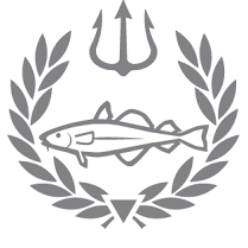When I heard earlier this summer that I would be staying with and diving with Sea Rover Rick Stanley, I couldn’t wait. Rick and his wife Debbie run OceanQuest Expeditions in Newfoundland, Canada, just out of St. John’s. And while I’d never dove in water that cold or that far north, I wasn’t worried after meeting the two of them. Everyone I had talked to earlier in the summer praised the two of them for being such wonderful and fun hosts and friends, and I could tell once I arrived that they were right. On top of that, they are always making sure people are safe, and are really responsive to the needs of each diver. Rick and Debbie are absolutely lovely people, and so was the rest of the group! There were nine of us: me, Mike, Annie, Lauren, Fred, Lewis, Mark, Andrew, and my dive buddy Glenn. Glenn and I were the only two people diving single tanks, everyone else was using either doubles or rebreathers.
We became really close really fast, since we were all living in the same house. The first two floors of the house were for guests, complete with a living room, kitchen, and dining table. Just above us was Rick and Debbie’s portion of the house. It really did feel like we were a family all living together – we would all make breakfast together, hang out and swap pictures in the living room in the afternoons, and go out for dinner together.
We also spent lots of time together on the OceanQuest boat, the Mermaid. 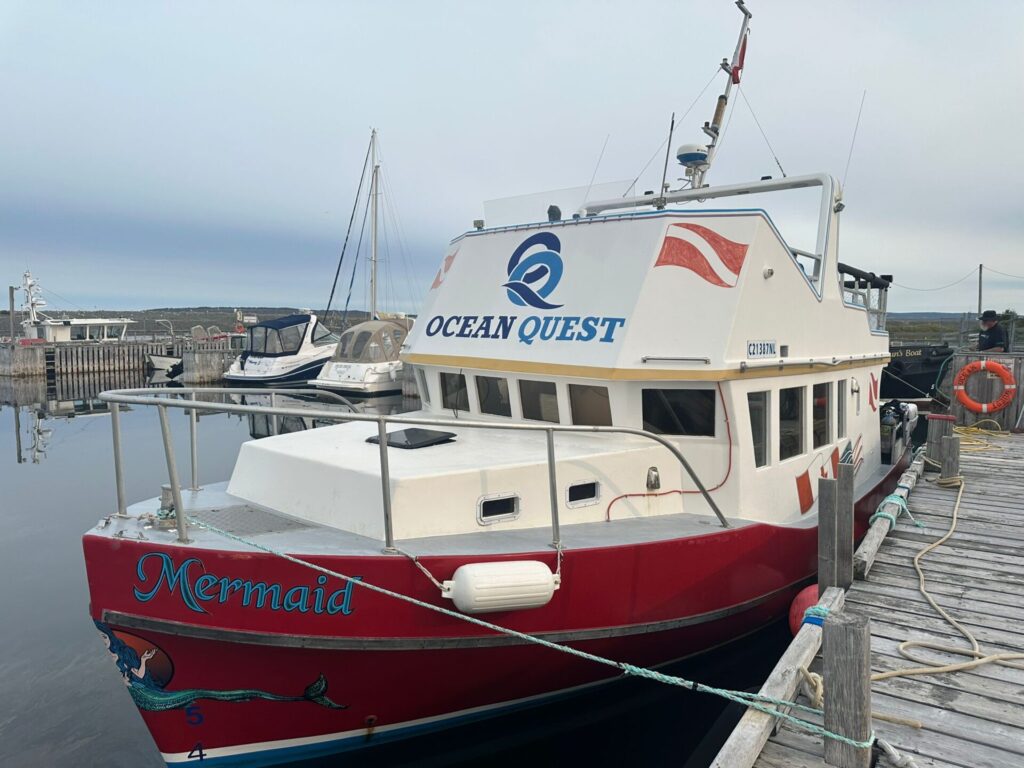 The boat was super close to OceanQuest, so once all our gear and tanks were loaded from the gear room onto the pickup trucks, we would hop on the back of the trucks and ride down to the dock. The boat was beautiful (almost all of it was customized and built by Rick himself!) with plenty of room for so many people. The dive sites were about 45 minutes away, so we had time to chat and hang out before we got briefed for the dive and started to gear up.
The boat was super close to OceanQuest, so once all our gear and tanks were loaded from the gear room onto the pickup trucks, we would hop on the back of the trucks and ride down to the dock. The boat was beautiful (almost all of it was customized and built by Rick himself!) with plenty of room for so many people. The dive sites were about 45 minutes away, so we had time to chat and hang out before we got briefed for the dive and started to gear up.
We did all of our boat diving at the Bell Island wrecks, a group of four ships sunk by German U-boats during WWII.
On our first day, Rick told us the story of how the two ships we’d be diving were sunk: The French steamship PLM was hit by a single torpedo from the German sub U-518 on Nov 2, 1942 and sank alongside twelve crew members (the survivors all washed up on Bell Island). Rick showed us a 3D model of the wreck and pointed out the features and swim-throughs to know about. 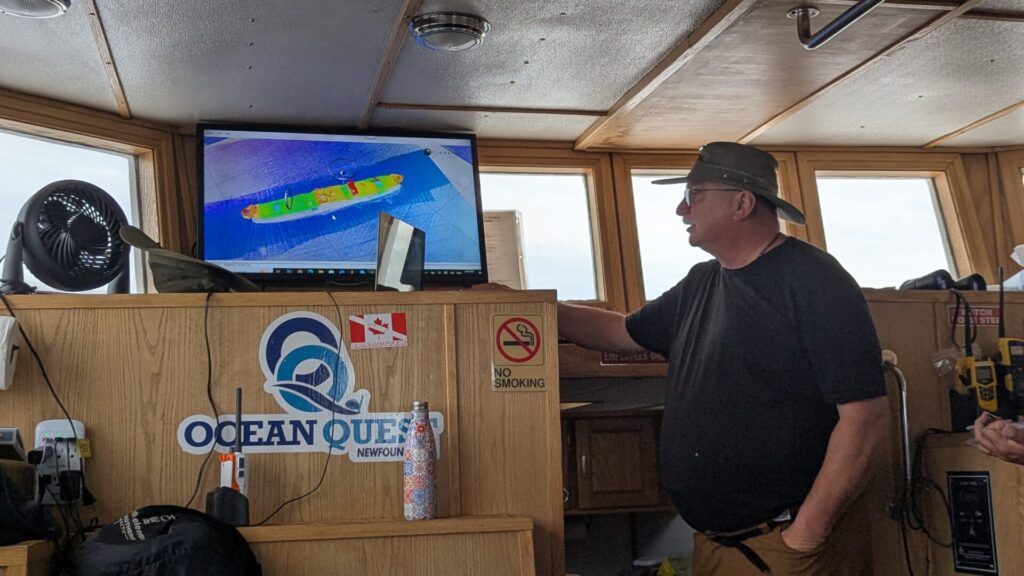 Unfortunately, Glenn and I were both underweighted on that first dive, so we didn’t get to see as much as we had hoped. We knew we’d be back later in the week though, and we were excited to go back and see more!
Unfortunately, Glenn and I were both underweighted on that first dive, so we didn’t get to see as much as we had hoped. We knew we’d be back later in the week though, and we were excited to go back and see more!
Our second dive that day was the Lord Strathcona, an ore carrier that was struck by torpedoes from U-513 on September 5, 1942.
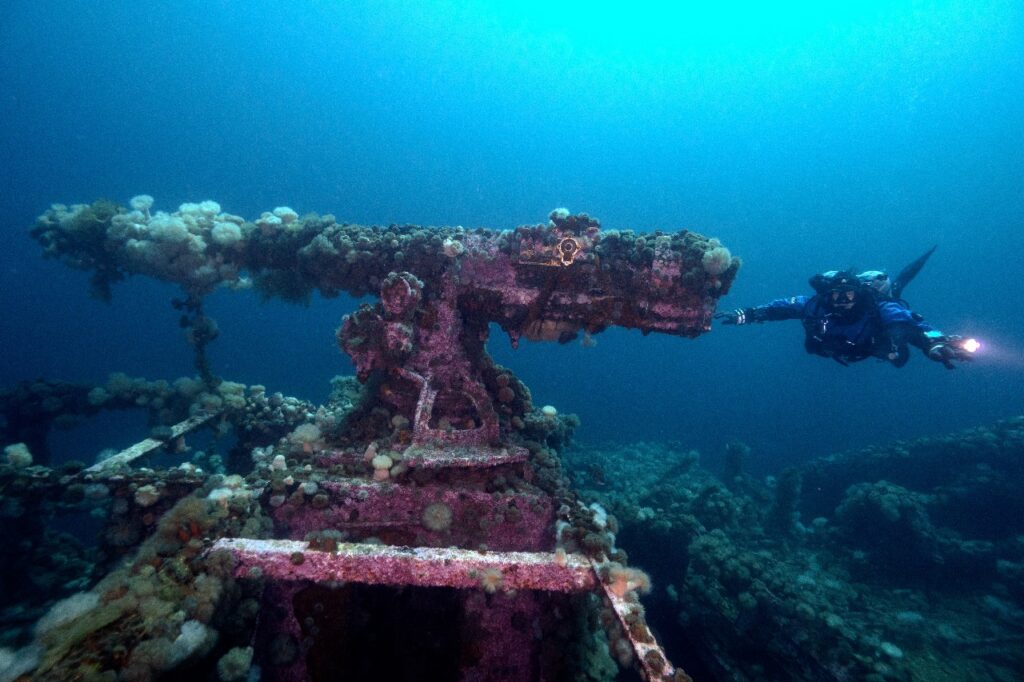
The conditions were gorgeous on this dive, and the anemones that covered every surface of the wreck were in “full bloom,” as Debbie put it. We swam from the bow to the stern of this impressive 400-foot wreck, and I was fascinated by the massive gun mounted on the stern. It was absolutely covered in frilled and colorful anemones.
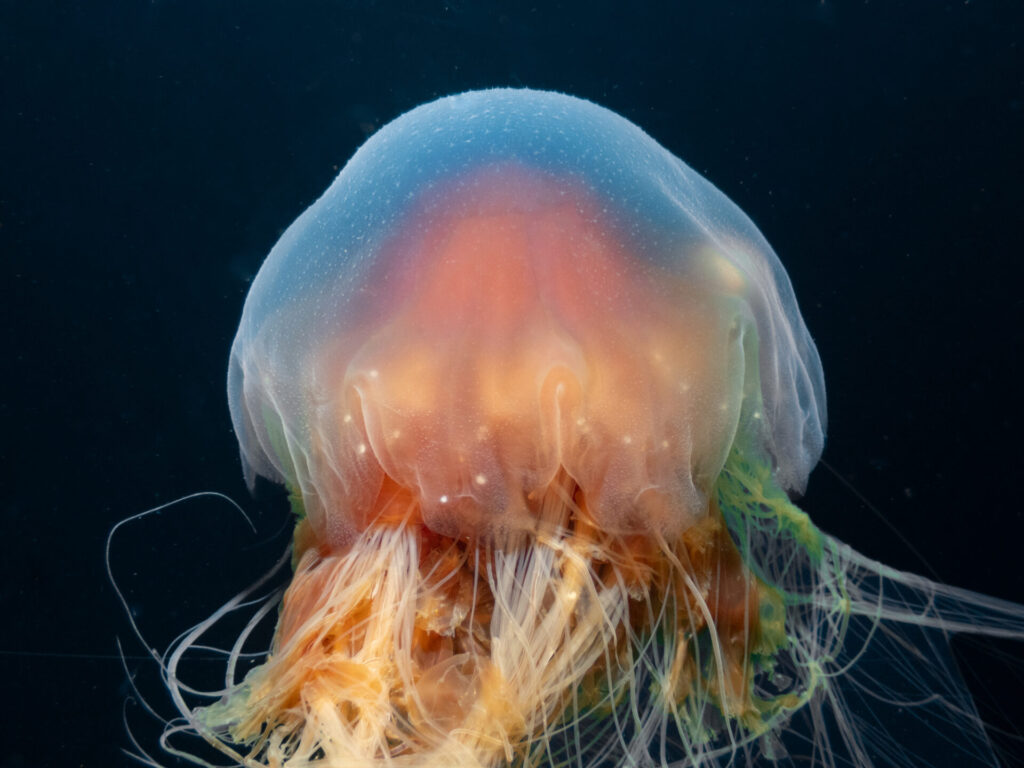 On the way back to the mooring line at the stern, we spotted ten or fifteen Lion’s Mane Jellies that had gotten tangled in the railings of the Lord Strathcona. As we swam, Glenn and I also followed Rick through several swim-throughs on the deck of the ship. It was really breathtaking to be surrounded in a tunnel of anemones and be able to look around and see ladders, portholes, and operating panels that have become part of the ocean ecosystem.
On the way back to the mooring line at the stern, we spotted ten or fifteen Lion’s Mane Jellies that had gotten tangled in the railings of the Lord Strathcona. As we swam, Glenn and I also followed Rick through several swim-throughs on the deck of the ship. It was really breathtaking to be surrounded in a tunnel of anemones and be able to look around and see ladders, portholes, and operating panels that have become part of the ocean ecosystem.
We went back to the Lord Strathcona on our second day, and this time Glenn and I took a different route around the wreck that Rick had suggested. 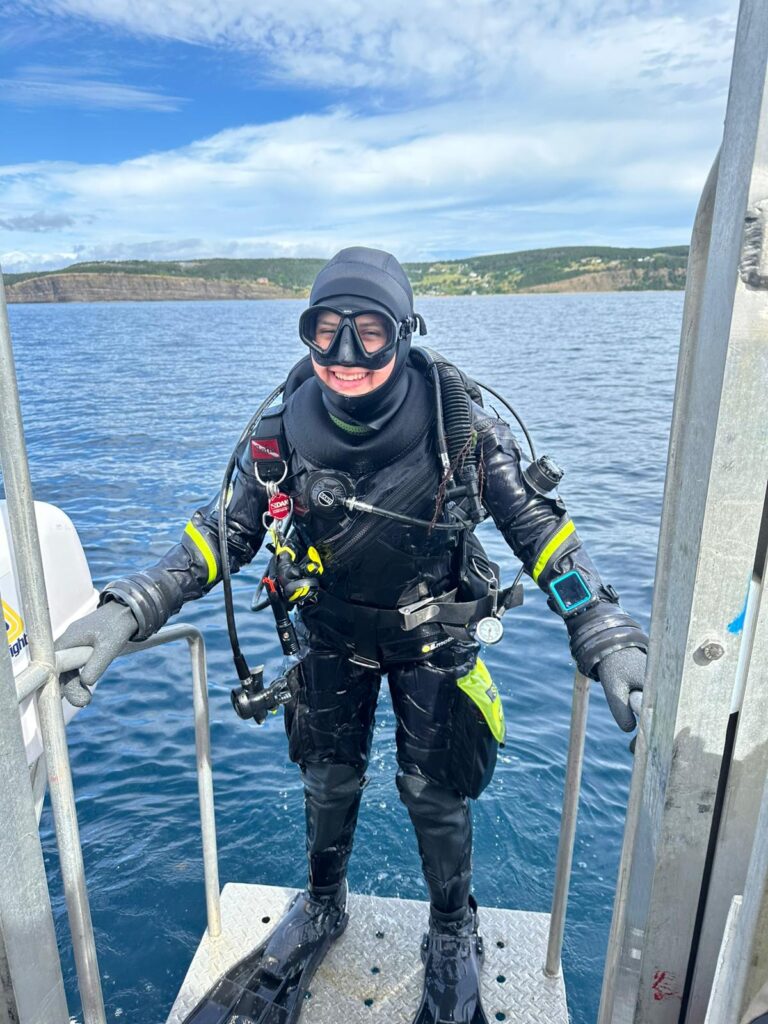 After some hot chocolate, we relocated for our second dive on the Saganaga. The big excitement in the dive briefing was about the lumpfish that live on that wreck. Rick and Debbie were able to tell us where to look, so when we got down we went right to the collapsed stern, and lo and behold: a female lumpfish! We watched her swim around for a bit and then continued down the deck of the ship to see anemones, lion’s mane jellies, and a second lumpfish between the massive smokestacks about two thirds of the way towards the bow. What a dive!
After some hot chocolate, we relocated for our second dive on the Saganaga. The big excitement in the dive briefing was about the lumpfish that live on that wreck. Rick and Debbie were able to tell us where to look, so when we got down we went right to the collapsed stern, and lo and behold: a female lumpfish! We watched her swim around for a bit and then continued down the deck of the ship to see anemones, lion’s mane jellies, and a second lumpfish between the massive smokestacks about two thirds of the way towards the bow. What a dive!
– Sofia
